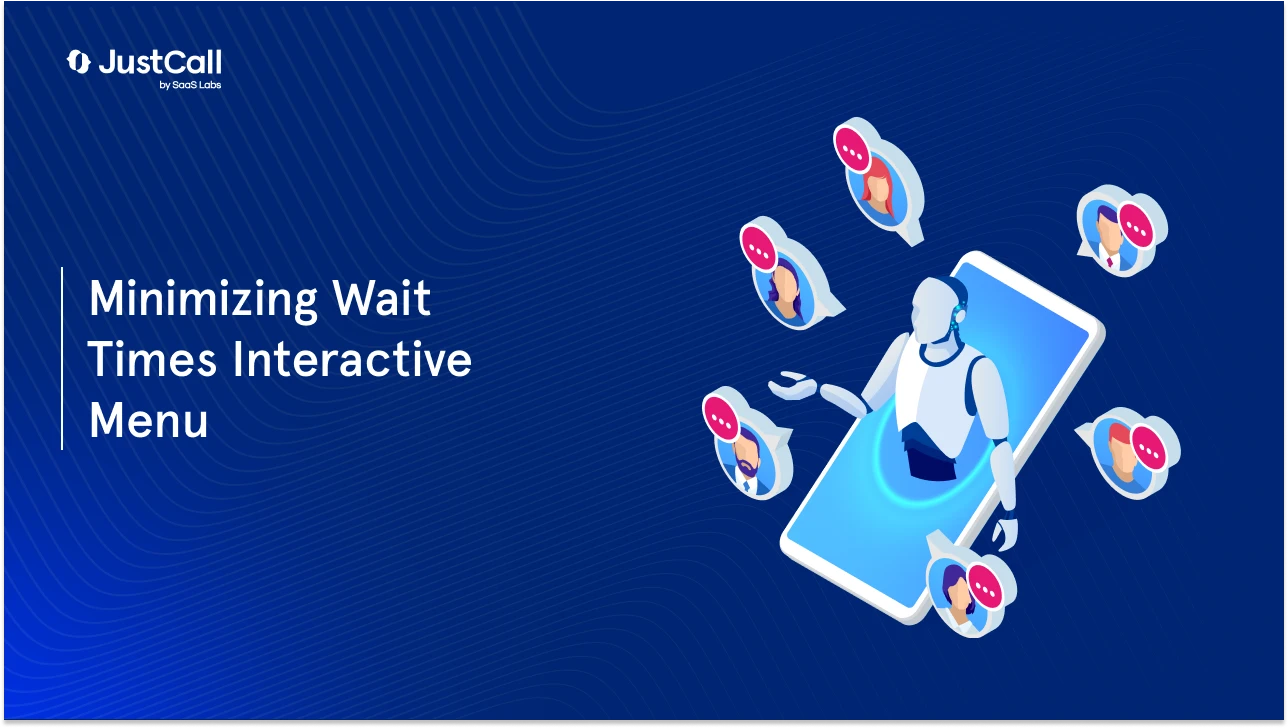How to Quickly Reduce Wait Times for Customers with Interactive Menu

Are long customer wait times becoming a challenge for you in your contact center? Looking for a straightforward solution to reduce wait times and improve customer satisfaction?
In this blog, we’re going to show you how to quickly tackle this issue by implementing an Interactive Menu in your IVR system. Let’s get going!
Issues in Implementing—And Using—an Interactive Voice Response System
Implementing an Interactive Voice Response (IVR) system can undoubtedly bring efficiency and cost savings to your contact center operations. However, there are challenges to be wary of:
- Frustrated customers: IVR systems can sometimes frustrate customers, particularly if the tool fails to understand the customer’s primary ask. This often occurs due to errors in the voice recognition system.
- Long-winding IVR menus: Nothing kills a conversation like a long-winded and complex IVR menu. If you ask the customer to choose option after option before they actually get to the agent, they will lose interest.
- Lack of human touch: Another challenge with using an IVR menu can be the lack of a natural-sounding and friendly voice. Some customers prefer to talk to a human agent instead of conversing with a robot, particularly for sensitive/emotional issues.
- Lack of integration with other tools: An IVR system that is not properly integrated with your CRM or other systems is a recipe for disaster. Your customers may have to repeat their query if they logged a complaint on the website that did not get captured by the IVR system.
All these factors can collectively contribute to a poor customer satisfaction experience.
Strategies to Drive IVR Optimization with Interactive Menus
Overcoming the challenges of a dull, robot-sounding, and boring IVR system is possible if you embrace the following tips:
- IVR design: Conceptualize and integrate a customer-centric Voice User Interface (VUI) design that allows users to choose the option intuitively. Some useful design tips include:
- Using simple and clear prompts
- Leveraging Natural Language Processing to tackle complex issues
- Offering feedback to customers
Remember, the more you customize your IVR menu, the higher the chances of connecting with customers on a deeper, more granular level.
- Simplicity: Keep the IVR options simple, limit the number of levels you use, and do not use the IVR feature for reporting alone (this can annoy customers to no end). Instead, leverage the caller analytics to personalize the communication to the extent possible. You can also offer self-support options for straightforward tasks.
Pro tip: Try restricting the main menu option to no more than 30 seconds.
- Audio: Focus on audio quality at all times, which includes factoring in accent, background noise, smartphone usage, etc.
- Integration: Your IVR system must be integrated with other tools to get a complete view of the customer. These insights you extract from the 360-degree customer data can enhance the customer experience. The end goal is to leverage a centralized omnichannel platform to streamline communication and keep it consistent.
- Empathy: Try using a natural voice within the IVR system–one that is able to demonstrate empathy and reassure customers when things go South. You must also allow the customer to get into the driver’s seat and give them the power to control the conversation. This includes allowing customers to opt out of the interaction as and when required.
Pro tip: To humanize the IVR experience, try using pre-recorded IVR messages that mirror the voice of a real agent. Focus on whether the IVR sound is using the right tone and inflection at strategic moments within the conversation flow.
Use a Virtual Receptionist for Driving Superior Customer Service Automation
Customers want increased convenience, speed, and flexibility when reaching out to a brand. This is why organizations must use a mix of human assets and automation to arm customers with the best of both worlds.
However, when it comes to call automation, your automation suite is incomplete without an automated phone system, especially one that comes with in-built interactive menus. Take, for instance, JustCall’s Interactive Voice Response System, which enables you to activate your IVR system and create an interactive menu for your customers.
The biggest advantage is that you can create multi-level IVR branches to match your specific workflow and direct callers to specialized teams on the go.
If you want to keep your customers informed and in the loop at all times, invest in JustCall’s all-round IVR system that comes power-packed with a host of features such as call routing, customizable menus and prompts, call forwarding, integration with CRM systems, voice recognition, multi-level menus, and more.
Start your 14 day Free TrialStreamline Interactions And Boost Customer Satisfaction With IVR











